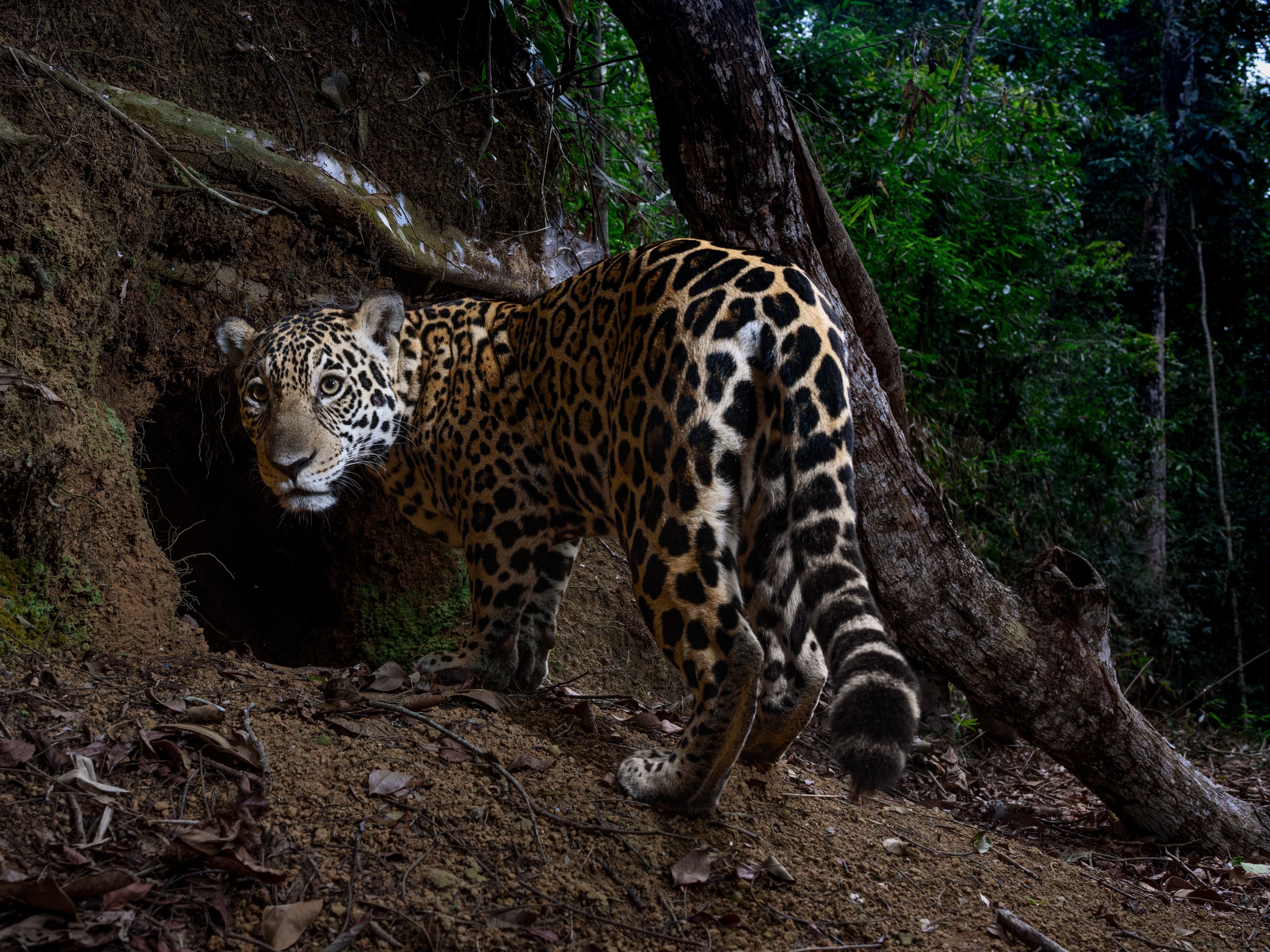
Big-Eyed, Fluffy-Tailed Lemur Species Discovered
The newly identified dwarf lemur is smaller than a squirrel and lives in rainforest canopies.
With their giant, round black eyes, nubby little ears, fluffy tails, and grabby hands, Madagascar's newest lemur species is hard not to love.
Scientists recently identified and named the new species Groves' dwarf lemur, known scientifically as the Cheirogaleus grovesi.
It was found in two of the country's national parks: Ranomafana, which is characterized by rainforest in a mountainous region, and Andringitra, a mix of grassland and forest.
In the rainforest, these lemurs live high up in canopies, where they shelter inside trees and feed on flowers and nectar. Scientists are still learning about the lemurs' social structure, but they have been observed in groups and wandering as individuals. The lemur is on average six inches long and has a tail measuring about 10 inches, making it smaller than a typical North American squirrel. Males and females pair up to mate, but females do a bulk of the child raising.
"They have a very specific niche," says Edward Louis, the director of the conservation genetics lab at the Omaha Zoo and author on the paper detailing the new species in the journal Primate Conservation.
Catching Lemurs
Scientists had to capture the animals using remote darting or by hand. If darted, Louis says the team deployed spring-loaded nets to catch the lemurs before they fall to the ground.
On the ground, scientists took measurements like head size and weight and extracted samples that were later analyzed in a lab. All lemurs captured for the study were eventually released at the place of capture.
It took nearly a year to officially name the lemur as a species in its own right, an effort that included partnerships with the State University of New York Polytechnic Institute and the nonprofit Global Wildlife Conservation.
At the Conservation Genetics lab in the Omaha Zoo, scientists were eventually able to distinguish the DNA of Groves' dwarf lemurs from other lemurs that are genetically similar.
The Groves' dwarf was one of several possible new species the zoo proposed in 2013. When scientists suspect they have found a possible new species, it's labeled a species nova until they can present enough evidence to prove it's new.
Counting Lemur Species
Twenty-four of the world's 113 lemur species have been found by the Omaha genetics lab. Louis says the lab has built such a large dataset and become so efficient that they're able to successfully prove the existence of a new species every year.
In addition to having the large dataset to mine from, the zoo has an on-the-ground conservation program called the Madagascar Biodiversity Partnership that works with locals to collect wildlife information.
When talking about the new lemur species, Louis is adamant about emphasizing the role of locals. Madagascar has been hit hard by deforestation, habitat loss, and poaching, and his team's research efforts are coupled with conservation and education measures to push locals to conserve wildlife habitat.
Lemurs are considered the most threatened mammal group in the world, according to the International Union for the Conservation of Nature.
Currently, 24 lemur species are listed as critically endangered, 49 are endangered, and 20 are vulnerable. Nearly all of them can be found on Madagascar.
The Groves' dwarf has not yet been given a conservation status, but because it is concentrated in two national parks, Louis says it will likely be labeled as threatened, a step above the animal's less fortunate cousins.





